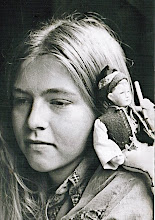You probably won't be able to ride a horse-drawn carriage down from the Pass anymore, but many cyclists and runners enjoy the challenge both uphill and down. The ride is a steep one; in places the gradient is 25%! Although the ride down by carriage was probably fun and exciting, the ride up was known as the struggle, because horses were unable to pull the weight of the carriage with passengers, so people had to get out and walk to the top. The ride down was winding, dusty, and bumpy, and passengers were packed in tightly. The first carriage is carrying 19 passengers along with the driver. It looks as if it would have been easy to fall out.
Here's another view:




















